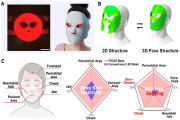The LED industry’s fierce price competition is putting manufacturers under increasing pressure to cut costs. To stand out from the crowd, Russia based manufacturer Monocrystal has sought alternative sapphire substrate market applications other than LEDs, such as smartphone markets. Mikhail Berest, Senior VP Global Sales Director, Monocrystal sheds light on the company’s sapphire substrate technology that has enabled these high end applications at day one of LEDforum Taipei 2013 that took place at Evergreen International Convention Center on Oct. 16-17, 2013.
The Russian company is one of the world’s largest sapphire substrate manufacturers, with global market share estimated at 25% in 2012, according to statistics compiled by Monocrystal. The manufacturer of 4”, 6”, 8”, 10” and 12” sapphire wafers supplies about 30% of sapphire substrates for LED applications, according to the company’s statistics.
The company has positioned itself as a sapphire substrate supplier for high end applications, which includes Solid State Lighting (SSL), BLU, automobile applications, lens cover, RFIC, and smartphone home buttons, said Berest. In contrast, low end products are LEDs for signage, LED toys and decoration, watch glass, display cover, and POS bar-code scanners. During an earlier interview with LEDinside reporter Pinchun Chou, Berest forecasted high-end sapphire substrate market demand will grow at a rate of 20 to 30% as demands in non-LED applications spurred by smartphone applications increases.
Yet, sapphire substrates for high end applications require specific features including low EPD, few crystal defects, high crystal chemical purity, precise crystal orientation, and low-stress material, explained Berest. Kyropoulos method is more ideal for high-end applications because it produces colorless large size high quality crystals with fewer structural defects, while HEM type is ideal for mass production its higher structural defects rate is more suitable for low-end applications. In addition, HEM sapphire substrate production tends to have higher crucible costs, and produces pink crystals.
Kyropoulos is not without flaws, though. It still runs the risks of wavelength non-uniformity, and may fail LED chip reliability tests. Monocrystal is still working on these two areas. The company projected, sapphire substrate market will be entering a new cycle in 2013, and that limitations in existing crystal growing methods may result in shortages in high-end applications.





 CN
TW
EN
CN
TW
EN





